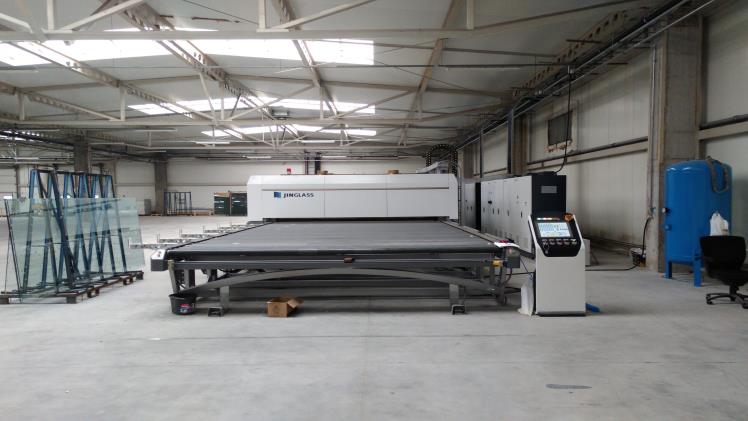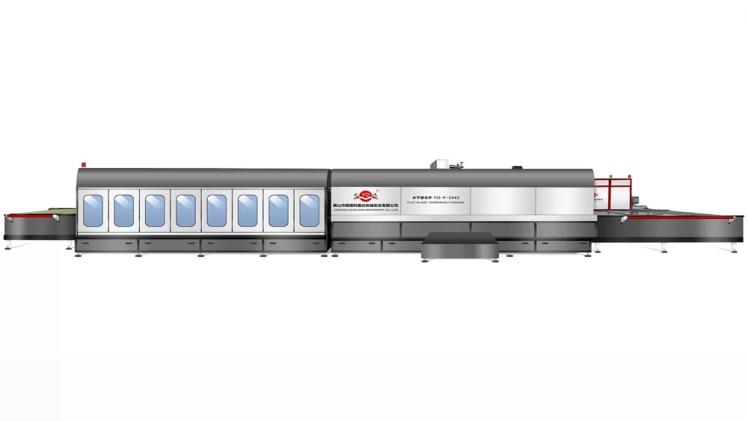Tempered glass can be a safer product than other types of glass, thanks to a controlled heat treatment process that hardens or strengthens it. For this reason, you will sometimes hear tempered glass referred to as laminated glass or toughened glass. Glass processed in a glass tempering furnace is not only stronger and safer, but also easier to bend. Some common applications of tempered glass include ovens, coffee makers, computer and phone screens, windows and shower doors, etc.
Tempered glass offers many more benefits than standard glass. Glass tempering furnaces and tempering processes make tempered glass stronger and safer than standard glass. This reduces the risk of broken glass or injury in the event of broken glass. Broken tempered glass is easier to clean than standard broken glass. In addition to being safer and stronger, tempered glass is also more resistant to scratches, damage and heat. Due to its longer durability, tempered glass is considered bullet and storm resistant, making it ideal for applications such as display cabinet systems or commercial and residential doors and windows.
Tempering glass using a furnace is a way to achieve the same end product quality as a solid fuel furnace, but it is also less expensive than tempering with a traditional furnace. This is because the process of making glass items to be tempered in a kiln uses no fuel, just the heat of the flame and some heat-resistant dyes. Glass objects can be shaped into almost anything imaginable, and glass gas furnaces have many applications.
CONSIDERING PURCHASING A GLASS TEMPERING FURNACE ?
If you are looking for a glass tempering furnace, you may notice that it contains a water tank that holds a large amount of molten glass. The glass is placed in a tank fitted with a small gas burner, usually located at the front of the oven. There are also glass gas appliances with side-mounted burners. Some units have a small control knob on the top that allows you to adjust the temperature of the glass and gas mixture and/or the ignition speed. When choosing a tempered glass item, you need to consider the quantity you will need in order to find the right size oven for your application.
Another type of LiaoDa glass tempering furnace is called Low-E glass tempering furnace. This type of oven burns at low temperatures, which means it can operate safely even when there is no oxygen in the air. Low-E glass products are often used in hospitals, laboratories and other high-security environments and can cause safety issues if exposed to high temperatures. Glass furnaces containing Low-E glass are similar to those used for tempering metal. It contains a burner and uses low-emission gases instead of oxygen for combustion. The third type of glass furnace is called a fiberglass workshop furnace. This type of furnace is unique because it contains a special furnace that burns compressed fiberglass. Unlike other fiberglass products, fiberglass products are not very dense and therefore can withstand enormous amounts of heat. Fiberglass products are made by compressing fiberglass into sheets and then heating them.
When you want to buy a glass tempering furnace for sale, you will find that there are many different options to choose from. One thing you need to keep in mind is that the price of these products will vary depending on the size of the device you are purchasing. Additionally, you may be able to find high-quality glass products at prices much cheaper than expected. The only way to determine if you’re getting a good deal on one of these products is to go online and do some research. You need to know the different types of glass tempering equipment and their uses.
Working Principle Of Glass Tempering Furnace
Tempering is a method that dates back thousands of years, and the concepts behind it have changed dramatically over the centuries. This is a technology that achieves the simplest possible cross-section of power and elasticity by heat treating a black steel or iron-based product to a limited extent (usually after a quenching process) . In theory, modern quenching methods may also resemble historical quenching methods, but the equipment used today has been significantly improved.

